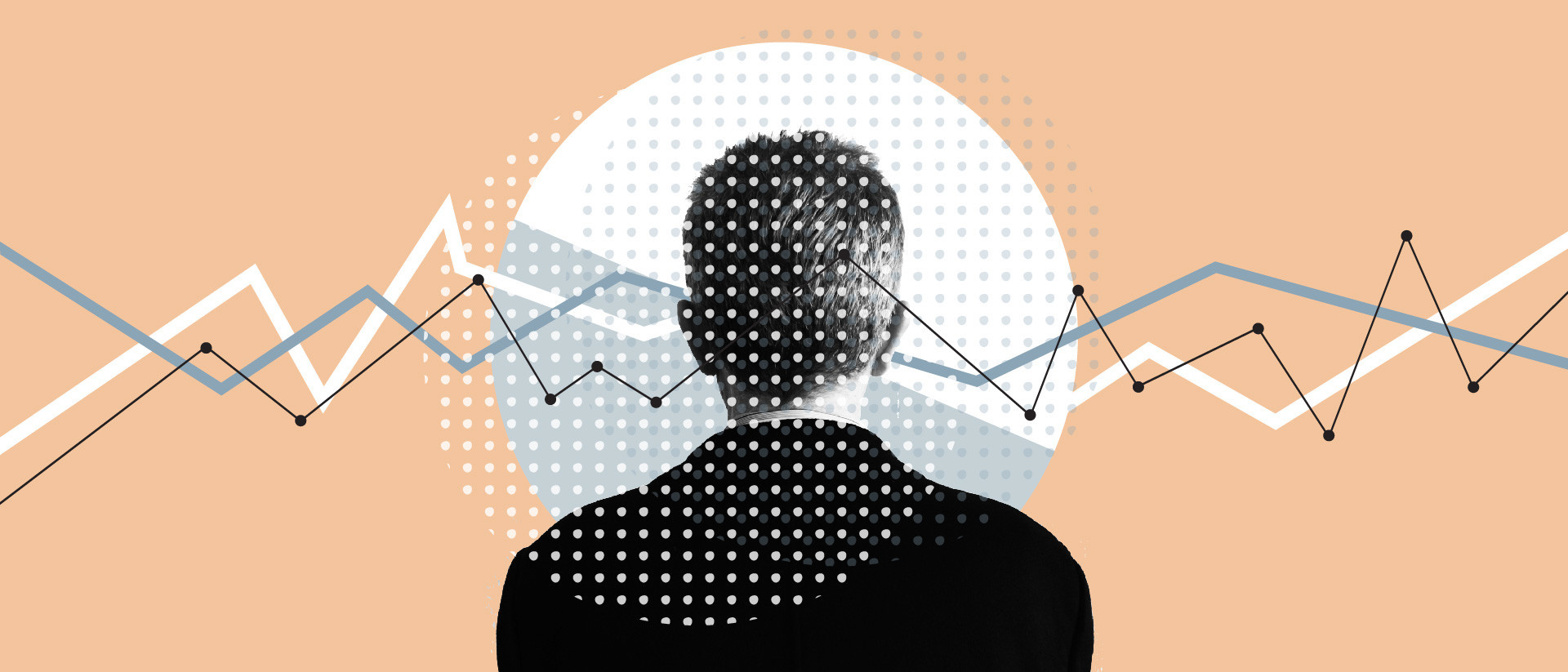He briefly hesitates, but then Martin Ravallion ladles a hefty portion of dog onto his plate. As a foreigner, this earns him huge brownie points. It’s 2005 and he’s been doing fieldwork for weeks in southwest China. This kind of lunch banquet is a ritual, even in the poorest provinces, such as here in Guizhou.
Ravallion passes the dish to the man beside him, and they strike up a conversation. The man says he’s the county’s chief statistician. The Party has made him responsible for calculating the region’s poverty figures. Ravallion asks how exactly he does that, calculate how many people are poor. “Martin’s method,” the man says between mouthfuls of dog.
Ravallion stops chewing. Does the statistician know, he asks, that he’s Martin – Martin Ravallion – the man who created that method? The man stares keenly at him. Then he whoops. “No, you’re putting me on! You can’t be the Martin.”
But Martin Ravallion is indeed the Martin.
The Martin who permanently changed the way we measure poverty, and the way we address poverty. The Martin who put poverty reduction on the map for economists, policy makers, and the general public. The Martin who made a mammoth contribution to reducing global poverty.
Wait a minute, you’re thinking. The Martin? I’ve never even heard of this guy.
And there’s a good chance you haven’t, unless you’re a poverty statistician yourself. His name rarely appears in the media. His English Wikipedia page (the only language in which he has one) contains fewer than 250 words. This is the first major article ever published about him.
And yet this man has also shaped your view of poverty. Even the fact that you’re reading an article on poverty right now is due to him.
High time, then, to tell his story. In Paris and Amsterdam, we accompanied Ravallion on working visits. We spoke for hours with him, his wife, his colleagues and friends. And so emerged a portrait of a man whose improbable energy launched a revolution.
The starting gun was fired in 1990. Ravallion was working that year for the World Bank, where a groundbreaking idea was born. An idea that’s so familiar to us now that it’s hard to believe that 30 years ago, it didn’t exist.
The lost decade for the poor
To understand how extraordinary that idea was in 1990, we have to go a little further back in time, to the 1980s.
Those years are now viewed by many as a “lost decade” for the world’s poor. The neoliberal ideology of Margaret Thatcher and Ronald Reagan gripped international politics. The World Bank – the most powerful development aid agency in the world – was at that time obsessed with one thing: economic growth.
Illustration by Hannah Kay Piché

That focus had far-reaching consequences. When a poor country wanted to borrow money, drastic measures were required: privatizing state-owned companies, removing trade barriers, and deregulating the market. Particularly in poor countries, those requirements earned the World Bank an image as a neocolonial economic occupying force.
If poverty even came up in the 1980s at the World Bank, it was automatically assumed that growth was the best weapon against it. But the protest against that assumption grew steadily louder, for growth can also mean the poorest people only get poorer.
A new chief economist, Stanley Fischer, changed the World Bank’s course at the end of the decade: in 1990 the organization’s most important report – the World Development Report – would be about poverty.
Enter Martin Ravallion, poverty economist.
The simple idea that put poverty on the map
Ravallion isn’t a big man, but he is a presence. His thick gray hair sticks up proudly. When he laughs, his face becomes a pageant of tiny wrinkles, and a row of gleaming white, perfectly straight teeth appears, as perfect as dentures. He always wears Mephisto shoes, even with a suit. The mild curve to his upper back makes him seem more modest than he is.
Soon after he joins the World Bank in 1988, he’s asked to serve as an advisor to the World Development Report 1990. Where the preceding reports still had themes such as financial systems (1989), public finance (1988), and industrialization and foreign trade (1987), now the World Bank must focus on the fate of the world’s very poorest. And most of all: how to help them.
One of the primary questions: When do we actually say that someone is poor? And quick on its heels, How many poor people are we talking about?
These are questions of crucial importance in reducing poverty. After all, if we want to fight poverty, we need a definition of what it is we’re fighting. And if we want to know whether our anti-poverty policies are effective, we must be able to measure whether the number of poor people is actually decreasing.
A headline is born: 1 billion people must live on less than 1 dollar a day
The team has an idea: a single poverty line for the entire world. But where do you draw that line?
That may seem like a purely technical question, but it is the core of Ravallion’s revolutionary work. He isn’t a man with one pioneering idea that earns him the Nobel Prize. He’s a man of countless bits of evidence, equations, methods, that together must make the case to show whether poverty policy works.
He’s a man who squelches the prevailing ideas about poverty not with a big mouth – though he sometimes has one – but with statistics. That insistence on evidence? That is his revolution.
And it all begins in 1990, when he develops a method for measuring global poverty that will be used for decades to come.
He and his colleagues first look at what several of the world’s poorest countries have come up with themselves to measure poverty. They examine Bangladesh, Egypt, India, Indonesia, Kenya, Morocco, and Tanzania. Those countries each have their own poverty lines, varying from $275 to $370 per year.
Ravallion starts crunching data. And what does he find? Roughly 633 million people around the world must live on less than $275 per year. At the higher limit of $370, the number is about 1 billion.
A shocking, but also arresting, figure. And $370 – that’s awfully close to 365.
And so a headline is born: 1 billion people must live on less than 1 dollar a day.
Even the fight against poverty needs good PR
That 1 dollar a day signalled the start of a radical shift in the way we think about poverty.
Where policy makers in the 1980s thought only of economic growth, by the turn of the millennium poverty was at the top of the political agenda at the United Nations and in nearly every country in the world. Where people had spent decades having to guess at whether the number of people in poverty was growing or shrinking, suddenly there were global poverty measurements that could be tracked and compared. And where no one used to know which country was the poorest, or why, by the first decade of the new millennium everyone could read up on which poverty policies worked and which didn’t.
All that from one simple number? Well, yes, actually.
In fact it’s a simple marketing trick. Ravallion shamelessly admits that the dollar-a-day is no more than an advertising campaign. “No serious scientist uses that figure, because if you really want to say something meaningful about a country, you have to use the local numbers.”
But such a global figure captures the attention of world leaders and newspaper readers. Even a noble cause like poverty reduction needs good PR – because without it, there’s no money.
Ravallion’s revolution was underway.
Ravallion’s own experience being poor
Ravallion grew up in Sydney’s Northern Beaches, a 15-minute walk from Collaroy Beach. He lived alone with his mother in a small house she bought with her parents’ help. She took Ravallion away from his father at the tender age of three. All he got from him was a mistake on his birth certificate: the French name Ravaillon became Ravallion through a misplaced letter i.
Just once he hears his father’s voice. He’s thirteen and his father is late in paying the child support that rounds out their meager income – welfare and his mother’s earnings from occasional seamstress work. In desperation Ravallion’s mother sends him to the red phone booth down the street, to call his father. He remembers every inch of that walk.
Illustration by Hannah Kay Piché
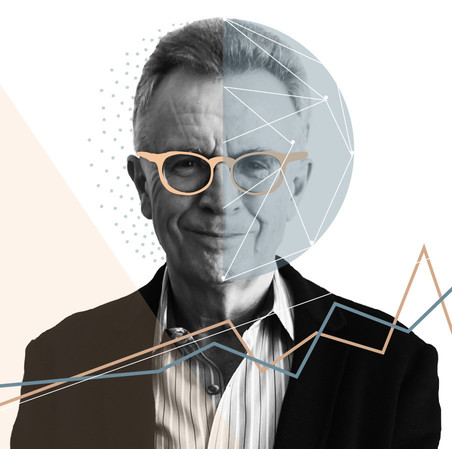
When the conversation is over, he can’t remember his father’s words. They were insulting, that much he knows. Something stupid, something awful. But Ravallion feels proud. Two days later, the check arrives in the mail.
Not much later he dares to say to his mother: now I want some decent clothes for a change. The blue shirt for his school uniform is dingy, and he’s ashamed of his beat-up pants. She gets angry and he instantly regrets asking. He knows they survive on welfare, doesn’t he?
At school everything revolves around surfing. Australia’s first world champion is in Ravallion’s class. But Ravallion isn’t much of a surfer. He gives it a try – who knows, maybe it’ll help with the girls – but it just isn’t his thing.
Reading, learning, studying, those are his talents. Time and again he gets the highest grades in the class, even when he isn’t trying. It boosts his self-confidence. He’s different from the rest, he thinks. Special, maybe.
At seventeen he starts studying architecture in Sydney. For the first time he meets others like himself, critical thinkers. He never touches another surfboard.
For a long time, his goal was to escape his own poverty – and by the time he’s twenty, Ravallion knows he’s going to succeed. He’s intelligent – the top student in the architecture program – and good jobs will be there for the taking.
His ambitions expand. Now he wants to make sure that other people no longer have to live in poverty.
Why even the prime minister of India reads his work
The year 1990 is only the beginning. Because a marketing trick alone isn’t enough to put poverty reduction on the map.
What they need is evidence. Evidence, evidence, evidence. “Martin isn’t a man of revolutionary ideas,” says his former boss, Lyn Squire. “He’s a brick-and-mortar man.”
The bricks: the methods for measuring poverty. The mortar: data on global poverty. And together they make, in Squire’s words, “a colossal and enormously valuable structure.” A structure that eventually no one can ignore.
Because from 1990 onward, Ravallion is devoted to his mission: poverty must become a serious science, with a tight methodology, based on solid data. Up to that point, people had been muddling along, statistically speaking. Only about twenty developing countries even collected poverty data in the first place – and it was often of poor quality. So how could you tell whether your poverty policy made sense?
Ravallion travels around the world to advise governments on how they can best measure and combat poverty. That’s not always easy. He still remembers his visit to China in the 1990s, when he wanted to convince the government that it needed to re-examine a major poverty program. “If we say it has impact, then it will,” one Chinese official told him during a meeting. The man was rolling up his tie, bored. “Just take our word for it.”
Repeat, repeat, repeat: that’s all Ravallion can do. Repeat how important it is to properly evaluate poverty policy. To check whether the numbers indicate that the policy is really working, instead of letting dogmas and ideologies guide you.
Over the years his success at that grows. At last he convinces the Chinese government that evaluations are important. And during a dinner with the Indian prime minister Manmohan Singh – himself an economist – Singh says, “Oh, Martin! I’ve read so many of your papers, it’s so good to meet you!”
But one of Ravallion’s thorniest questions remains: has his work led to fewer poor people in the world? How do you know if your work has been successful? When he gives a speech to the G20 finance ministers, he says, “they don’t pelt me with eggs or tomatoes, so they must agree with me at least a little.” But do they actually do anything with his advice? “That, you never know.”
What he can’t do as an architect, but can as an economist
At twenty, Ravallion thinks he can best help the poor as an architect. During college in the 1970s, he works on several socially-minded projects: designing better low-income housing, software people can use to design their own homes. But he quickly discovers that architecture is driven by money and commercial interests. Architects mostly work for the rich, not the poor.
He considers quitting the program, but then comes a turning point. In his sophomore year he convinces his teachers to let him and two other students spend a year studying a country town in Australia named Yass.
Illustration by Hannah Kay Piché

There’s nothing special about Yass and its 5,000 residents, some 175 miles southwest of Sydney. Here in this typical town, the three friends want to answer the question: Why do some people live here, and others there? And how did things end up that way? Why do the rich live in south Yass, for example, and the poor in the north?
That year they drive the six hours to Yass a dozen times. Their advisor, Ross King, almost always goes with them. One night in the cheap motel where they often stay, King hands Ravallion a paper by Patricia Apps. Apps was once an architect, too, but she became an economist.
Ravallion looks at the paper, the first economics paper he’s ever read. He doesn’t understand a thing. The math is simple, but how do those calculations relate to reality? He studies the paper front to back, runs through the formulas again and again.
And then comes the epiphany: This is a science that doesn’t use mathematics to measure a roof or weigh a brick. It’s a science that uses math to understand social issues.
Social issues like poverty.
Ravallion leaves for Europe. His mother has since died. He applies to the master’s program at the London School of Economics.
Others are just very slow
From 1990 on, Ravallion’s papers all investigate ways to sharpen our thinking on poverty. He collaborates with big names in the field, but no one can keep up with his work pace. No economist has ever published as much on poverty as he has. He says, deadly serious, that others “are just very slow.”
He is obsessive, without a doubt. His brain never switches off. He walks to work, so he can already start thinking about his projects.
Ravallion and his wife at the dining table.

Ravallion rarely moves in economist-free circles. You can hear it in the way he speaks. Of managers at the World Bank he says, “Ambition is weakly correlated with intelligence at best.” And even when the question is whether he liked a restaurant, he answers, “The charm/food ratio was high."
His work is his life. He’s married to it – literally.
Leaving the pub early for love
He’s getting his doctoral degree at the London School of Economics when he runs into Belgian master’s student Dominique van de Walle. Her slender frame makes a surprising contrast with her full voice. Her American accent is a memento from a childhood filled with intercontinental moves and international schools.
Ravallion falls head over heels for Van de Walle. He soon leaves for Oxford – Van de Walle will join him once she finishes her degree. His long hours drinking beer at the pub with his best friend, Abhijit Sen, have been exchanged for evenings spent with his new love.
Ravallion and his wife at the dining table.

After a few years at universities in England and Australia, the couple leaves for Bangladesh, the first developing country where Ravallion will conduct research. They stay in a guest house without running water. Every now and then they sneak into the pool at the Intercontinental Hotel, to use the showers. And beer has become a big treat.
Van de Walle contracts amoebic dysentery, but still: those were the days.
Van de Walle and Ravallion never had children. They’ve now been together for more than 35 years – as a couple, but also as colleagues. They’ve conducted dozens of studies together and constantly provide input on each other’s work. In their conversations the ideas bounce back and forth – a highly content-rich type of quibbling.
Poverty can also be relative
By the time the millennium bug turns out to be a myth, Ravallion is widely revered. “The World Bank – and thus the entire developing world – is like an oil tanker,” says fellow economist Peter Lanjouw. “It’s almost impossible to change its course. But Martin did it, in less than ten years. That’s just unbelievable.”
But his work also has its critics. Rich countries also have poor people, though they earn more than a dollar a day. So does Ravallion think they’re not poor?
Ravallion understands the sentiment. As a child he, too, felt poor in his worn and shabby school uniform. In other words, poverty can also be relative. If you don’t have certain things, you don’t fit in.
Yet time after time Ravallion consigns this argument to the wastebin. In poor countries, he says, there’s only one thing that matters: survival. When you’re busy trying not to starve to death, you don’t have time to worry about “fitting in.”
That is, until 2005, when a working visit takes him to Yemen, where the population has embraced an expensive habit. "Qat addiction is ruining our society,” the director of the statistics bureau tells him. Ravallion has already noticed that almost everyone he passes on the street is chewing on the plant, a mild stimulant. Ravallion will later calculate that the poorest 10% of the population in Yemen spends 10% of their income on qat, a drug which is anything but a basic need.
It’s the first time Ravallion has to admit that he’s wrong. Relative poverty is as real as absolute poverty. That insight is crucial in fighting poverty. You not only have to ensure that people survive, but also that they take meaningful part in society.
Why he’s both feared and revered
Admitting he’s wrong isn’t easy for Ravallion. Proud, adamant, forceful in his ideas – this is how his colleagues describe him. He himself consistently describes his work as a “battle” that can be won or lost.
Ravallion and his wife at the dining table.

It makes people not only admire him, but also fear him. Colleagues who question his ideas are usually greeted with a no-holds-barred “That’s utter nonsense!” And not infrequently, he comes back the next day with a new paper he’s written that spells out – mathematically – why they’re wrong.
And often, Ravallion is right. But not always.
In that last case, his colleagues say it takes him, on average, twenty-four hours to come around. The colleague he called insane on Monday may find him standing in his office on Tuesday morning: “Okay, it wasn’t entirely stupid what you were saying.”
Illustration by Hannah Kay Piché

Ravallion is and remains a scientist: if there’s enough evidence, he’ll change his assumptions. He likes to quote the Chinese politician Deng Xiaoping, “Seek truth from facts.”
Yet no one is surprised that for the last few years, Ravallion won’t sit in the same room with the other alpha male in his field. Angus Deaton, a Scottish-American scientist, won the Nobel Prize in Economics in 2015 for his research on poverty. He and Ravallion would seem to be aligned: both want to use better data to reduce poverty.
But it all goes wrong in January 2015. Both men are present at a seminar on poverty held by the World Bank. The tension has been in the air for some time. A new method for calculating global poverty has been developed. Deaton is for, Ravallion against.
Neither of them is used to being contradicted. And both are too proud to concede.
And so the debate rapidly deteriorates into an argument that wouldn’t be out of place in the schoolyard. It’s the last time they’re in the same room.
Though they used to have the occasional dinner together, Ravallion wouldn’t dream of it now. “Angus and I disagree on the importance of being a nice person. I think it’s very important.”
Ravallion and his wife at the dining table.

Retirement? No, thanks.
His wife is there. His colleagues are there. Even the president of the World Bank is at Ravallion’s farewell party, though he rarely attends such events. But no one is surprised that he’s there today. Because in not quite a quarter of a century, Ravallion has accomplished more than entire departments.
He has written countless scientific papers, books, and reports. Today 131 countries collect data on poverty. At both the World Bank and the United Nations, poverty reduction is priority number one.
But how many people, precisely, has Ravallion rescued from poverty? Even his advanced statistical methods can’t answer that. But though it can’t be measured, not a single colleague is in doubt: without Ravallion’s work, there would be far more poverty in the world.
He’s actually a little relieved to be leaving. Politics at the World Bank have been very stressful for him these past years. The endless discussions on the importance of research at the World Bank. Endlessly digging in his heels to secure funding for his projects.
But retiring? “I’m not sure what that would mean.”
And so he accepts a job he can keep doing until he dies: professors in the US don’t have to retire. At the University of Georgetown – not entirely coincidentally a half-hour’s walk from the World Bank – he will continue his research and motivate a new generation to help eradicate poverty.
And, true to form, he immediately sits down to write a 700-page textbook on the economics of poverty – because the existing material doesn’t meet his exacting Ravallionian standards.
This article kicks off a series of articles on poverty. In the months to come, we’ll examine questions such as: How can you compare the figures from different countries? Is poverty about more than just money? And how has our thinking about poverty changed in the past 200 years?
This article was made possible with support from the Dutch Fund for Special Journalism Projects (Fonds Bijzondere Journalistieke Projecten, or FBJP).
—Translated from Dutch by Grayson Morris and Erica Moore
More from De Correspondent:
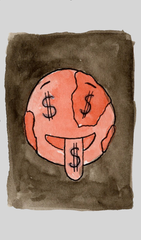 Poverty 101: How can we end global poverty once and for all?
By 2030 the world must be free of extreme poverty. The question is how? Of course there’s no single answer. In this crash course on global poverty, we bring together as many answers as we can. We’ll look at the extent of the problem, the causes, and possible solutions.
Poverty 101: How can we end global poverty once and for all?
By 2030 the world must be free of extreme poverty. The question is how? Of course there’s no single answer. In this crash course on global poverty, we bring together as many answers as we can. We’ll look at the extent of the problem, the causes, and possible solutions.

 How do you go about counting the world’s poor?
Journalists, politicians, and scientists make all kinds of assertions about poverty. Yet the figures they rely on are not without controversy. In a new series, we’re looking into what makes poverty so difficult to measure. Today: counting the poor in three easy steps.
How do you go about counting the world’s poor?
Journalists, politicians, and scientists make all kinds of assertions about poverty. Yet the figures they rely on are not without controversy. In a new series, we’re looking into what makes poverty so difficult to measure. Today: counting the poor in three easy steps.
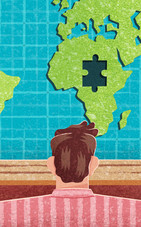
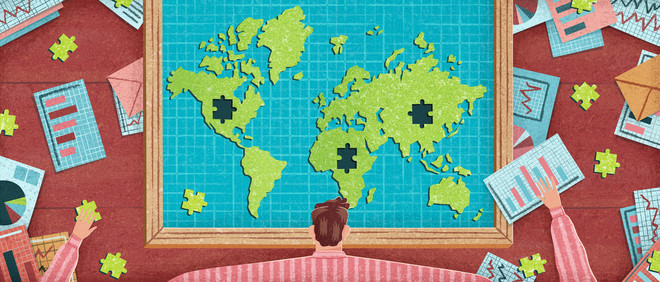 Why we know less about developing countries than we think
Africa boasts five of the world’s ten fastest-growing economies. And the percentage of poor and malnourished people worldwide has been cut by half in the last 25 years. Poor countries seem to be prospering – but is the rosy picture accurate? I crunched the numbers, and here’s the truth: when it comes to developing countries, there’s a lot we don’t know.
Why we know less about developing countries than we think
Africa boasts five of the world’s ten fastest-growing economies. And the percentage of poor and malnourished people worldwide has been cut by half in the last 25 years. Poor countries seem to be prospering – but is the rosy picture accurate? I crunched the numbers, and here’s the truth: when it comes to developing countries, there’s a lot we don’t know.

 Why do the poor make such poor decisions?
Our efforts to combat poverty are often based on a misconception: that the poor must pull themselves up out of the mire. But a revolutionary new theory looks at the cognitive effects of living in poverty. What does that relentless struggle to make ends meet do to people?
Why do the poor make such poor decisions?
Our efforts to combat poverty are often based on a misconception: that the poor must pull themselves up out of the mire. But a revolutionary new theory looks at the cognitive effects of living in poverty. What does that relentless struggle to make ends meet do to people?





